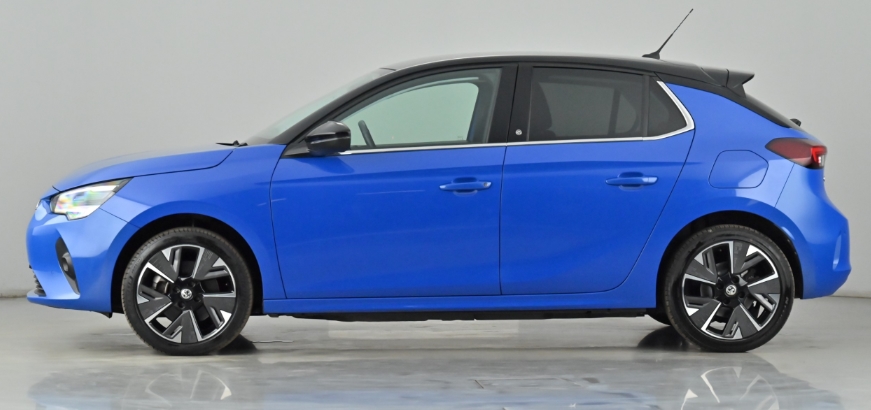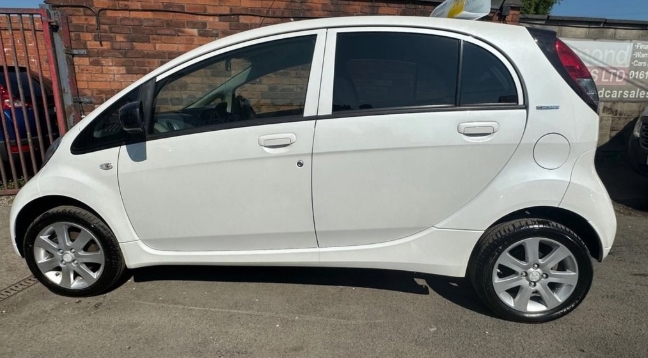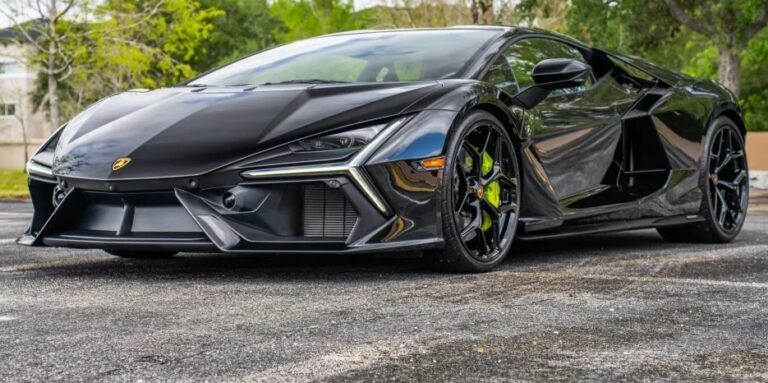The Vauxhall Corsa – A Sophisticated Evolution and Tech Integration
Of all the cars that have graced British roads, few are as ubiquitous or as deeply woven into the fabric of the nation’s motoring culture as the Vauxhall Corsa. For generations, it has been the quintessential first car, the dependable family runabout, and the affordable hot hatch. Its journey from a sharp-edged 1980s supermini to a sophisticated, electrified best-seller is a story of adaptation, evolution, and enduring popularity. This is the evolution of the Vauxhall Corsa.
The Precursor and the British Anomaly: Corsa A (1982-1993) – The Vauxhall Nova
The story of the Vauxhall Corsa in the UK begins with a different name: the Nova. While the Opel Corsa A was launched across Europe in 1982, right-hand drive production at the Zaragoza plant in Spain did not commence until 1983. Vauxhall’s marketing team, feeling the name “Corsa” sounded too much like “coarser,” opted for the fresh, dynamic “Nova” nameplate for the British market.
The Nova was a radical departure from its predecessor, the rear-wheel-drive Chevette. It was a thoroughly modern, front-wheel-drive supermini designed to compete with the Ford Fiesta and Austin Metro. Penned by legendary designer Erhard Schnell, its “folded paper” design was sharp, angular, and perfectly in tune with the aesthetic of the early 1980s.
Initially launched as a 3-door hatchback and a 2-door saloon (a body style that quickly fell from favor), the range soon expanded to include a 5-door hatchback and a 4-door saloon, demonstrating its versatile platform.
Models and Trim Levels:
- Core Trims: The hierarchy was simple at first, beginning with a spartan base model, followed by the L, GL, and the range-topping SR (Sporting Rallye). As the years went on, trims like Merit became the new entry-point, with special editions like Trip, Flair, and Diamond frequently appearing to boost sales.
- Performance Models: The Nova truly captured the public’s imagination with its performance variants. The 1.3-litre SR was an instant hit, offering spirited performance in a lightweight package. However, the legend was the GSi (later GTE in some Opel markets), launched in 1990. It was fitted with a potent 1.6-litre 16-valve engine, the same family as the famed “Red Top” from the Astra GTE, making the featherlight Nova a formidable pocket rocket and a cult classic in tuning circles.
The Revolution in Roundness: Corsa B (1993-2000)
By the early 1990s, sharp angles were out, and soft curves were in. For its second generation, Vauxhall dropped the Nova name and finally aligned with the rest of Europe, introducing the Vauxhall Corsa. The Corsa B was a complete transformation. Designed by Hideo Kodama, its bubbly, rounded, and friendly aesthetic, complete with distinctive “bug-eye” headlights, was a masterstroke. It broadened the car’s appeal immensely, particularly with younger drivers and women, who had been a key target demographic.
The build quality and interior design were a huge leap forward from the utilitarian Nova. The platform was all-new, offering improved ride comfort, safety, and refinement. This generation cemented the Corsa as a dominant force in the UK sales charts.
Models and Trim Levels:
- Body Styles: The core offerings were the popular 3-door and 5-door hatchbacks. The platform also spawned the quirky Tigra coupe and the practical Combo van.
- Core Trims: The launch trims were typically Merit (later replaced by Envoy), L, GLS, and the sporty SRi.
- Special Editions: The Corsa B era marked the explosion of the special edition strategy. Vauxhall released a bewildering array of limited-run models to maintain showroom traffic. Names like Breeze, Club, Expression, SXi (which would become a permanent trim level), Trip, and Vegas became commonplace. These usually offered unique paint, upholstery, and extra equipment like sunroofs or alloy wheels for a competitive price.
- Performance Models: The SRi was the warm hatch, usually equipped with a 1.4-litre 16v engine. The top-tier performance model was the GSi, carrying a 1.6-litre 16v engine. While not as raw as the Nova GSi, it was a more mature and capable hot hatch for its time.
The Grown-Up Era: Corsa C (2000-2006)
The third-generation Corsa was an exercise in evolution rather than revolution. It took the successful rounded formula of the Corsa B and refined it with a sharper, more substantial, and distinctly “grown-up” design. Built on the new Gamma platform, it was larger, heavier, and significantly more spacious inside, especially for rear passengers, thanks to a longer wheelbase.
The focus for the Corsa C was on big-car refinement and safety. It achieved a four-star Euro NCAP crash test rating, a significant achievement for a supermini at the time. The driving experience was more comfortable and stable, feeling less like a small city car and more like a scaled-down Astra.
Models and Trim Levels:
- Core Trims: The trim structure became more defined. The range typically started with Expression or Life, moving up through Club, the comfort-oriented Elegance, and the sport-styled SXi. The SRi returned as the flagship warm hatch.
- Engines: The big news under the bonnet was the introduction of common-rail diesel technology. The 1.3 CDTi and 1.7 CDTi engines (developed in partnership with Fiat) offered impressive fuel economy and refinement, making the Corsa an excellent choice for long-distance commuters. Petrol engines were updated versions of the Ecotec family.
- Performance Model: The GSi badge made a brief appearance early in the Corsa C’s life with a 1.8-litre engine but was soon dropped in the UK, leaving the 1.8-litre SRi as the fastest model in the range.
The Two-Faced Contender: Corsa D (2006-2014)
Arguably one of the most stylish generations, the Corsa D, launched in 2006, was a bold step forward. Co-developed with Fiat and sharing its underpinnings with the Grande Punto, it featured a clever design strategy: the sporty 3-door had a sleek, coupe-like profile, while the 5-door was taller and more practical, appearing almost like a mini-MPV. This allowed the Corsa to appeal to two distinct sets of buyers with one platform.
The interior was a huge improvement, with better quality materials and a more modern design. It was packed with features previously unseen in the supermini class, such as a heated steering wheel and an integrated bike rack (FlexFix).
Models and Trim Levels:
- Core Trims: The range was extensive, starting with Expression and Life, moving through Club, SXi, the luxurious Design, and the sporty SRi. Later facelifts introduced trims like SE and the sporty cosmetic pack of VX-Line. Limited editions like the Sting and Black Edition were also popular.
- EcoFLEX: This generation saw the introduction of the EcoFLEX models, which focused on maximum fuel efficiency and low CO2 emissions, appealing to company car drivers and the environmentally conscious.
- Performance Model – The Return of a Hero: The Corsa D heralded the explosive return of a true performance flagship: the VXR. Powered by a 1.6-litre turbocharged engine producing 189bhp, the Corsa VXR was a raw, aggressive, and thrillingly fast hot hatch that could rival the very best in its class. Special, more focused versions like the Nürburgring Edition and Clubsport offered even more power and handling prowess, cementing the Corsa’s performance credentials for a new generation.
The Familiar Face, Refreshed: Corsa E (2014-2019)
The Corsa E represented a period of transition for Vauxhall under General Motors. Rather than being an all-new car, it was a comprehensive re-engineering and re-skin of the Corsa D’s successful platform. While the roofline and side profile were familiar, every exterior panel was new. The front end was completely redesigned, adopting the “smiling” grille and headlamp design seen on the Vauxhall Adam city car.
The most significant changes were inside and under the bonnet. The cabin was completely overhauled with higher-quality materials, a much-improved layout, and the introduction of the IntelliLink touchscreen infotainment system. The driving dynamics were also heavily revised with new suspension and steering components to improve both comfort and handling.
Models and Trim Levels:
- Core Trims: The range included Sting, Life, Design, SE, SRi, and the cosmetically enhanced SRi VX-Line. Limited Edition models, with contrasting black roofs and wheels, were exceptionally popular.
- Engines: The star of the show was the new 1.0-litre 3-cylinder SIDI (Spark Ignition Direct Injection) Turbo engine. This small but mighty unit was smooth, quiet, and punchy, earning critical acclaim and transforming the experience of driving a small-engined Corsa.
- Performance Model: The VXR returned, now with 202bhp, continuing its reign as the high-performance halo model of the Corsa family.
.

.
The French Revolution and the Electric Dawn: Corsa F (2019-Present)
The sixth-generation Corsa marks the most fundamental shift in the model’s history. Following Vauxhall/Opel’s acquisition by Groupe PSA (now Stellantis), the planned GM-based Corsa was scrapped. In a remarkably short time, a brand-new Corsa was developed on PSA’s Common Modular Platform (CMP), the same architecture that underpins the Peugeot 208.
The result is a car that is completely different from any Corsa before it. It’s lower, lighter, and more aerodynamically efficient. The design is sharp and athletic, and for the first time, it is available exclusively as a 5-door hatchback.
The biggest news, however, is the powertrain. Alongside efficient 1.2-litre PureTech petrol engines and a 1.5-litre diesel, Vauxhall launched the Corsa-e, a fully electric version. This move future-proofed the nameplate, placing it at the heart of the electric vehicle revolution. In 2021, the Corsa became the UK’s best-selling new car, a testament to the success of this new direction. A 2023 facelift saw the Corsa adopt Vauxhall’s new ‘Vizor’ front-end design and the electric model was rebranded as the Corsa Electric, with an updated battery and motor for improved range.
Models and Trim Levels:
- Trim Structure (Simplified): The range has been simplified to make choosing easier. Launch trims included SE, SRi, Elite Nav, and Ultimate Nav. Following the facelift, this has been streamlined further into Design, GS, and Ultimate.
- Powertrains: The choice is now between petrol and fully electric, marking the Corsa’s complete transition into the modern automotive era. The Corsa Electric is not a niche model but a core part of the range, often leading sales in the electric supermini segment.
From the angular Nova that defined the 80s to the bubbly B that conquered the 90s, through the mature C, the stylish D, the revamped E, and now the revolutionary, electrified F, the Vauxhall Corsa has been a constant mirror to the changing demands of the British motorist. It has been a symbol of freedom for new drivers and a reliable workhorse for families. More than just a car, the Corsa is a four-decade-long success story and a true British institution.







